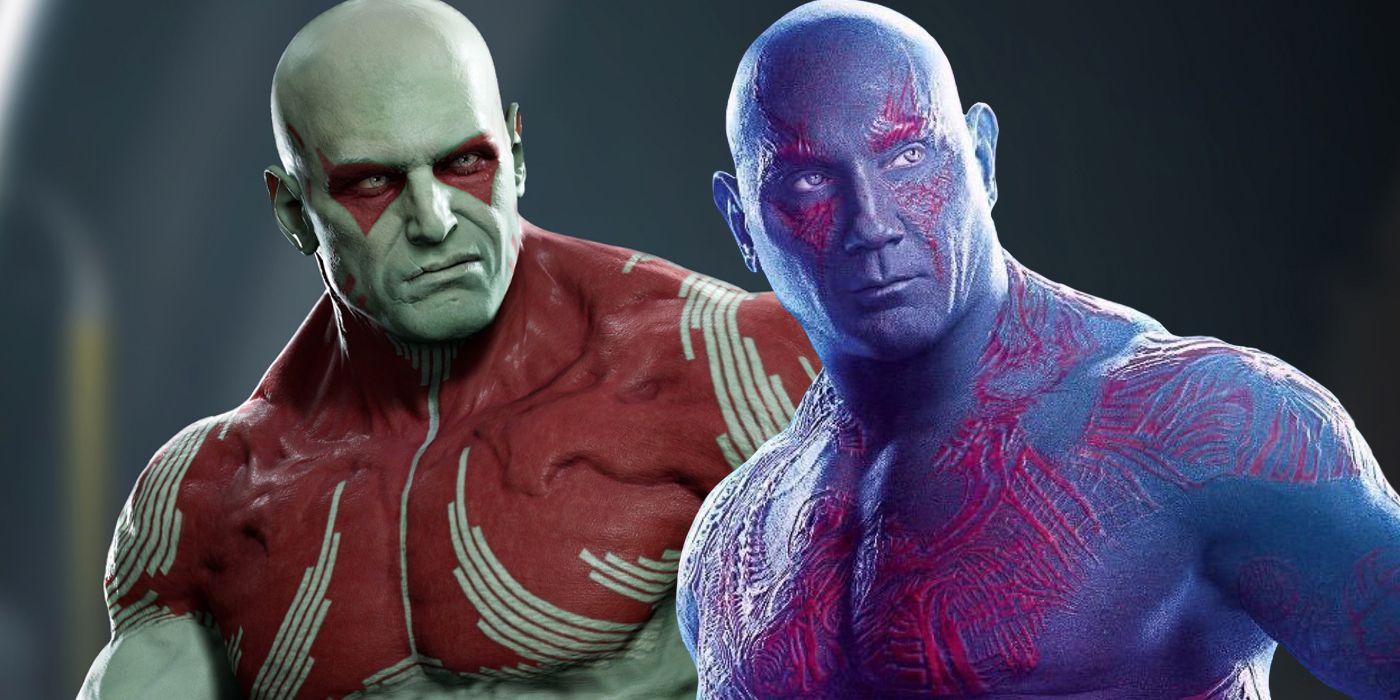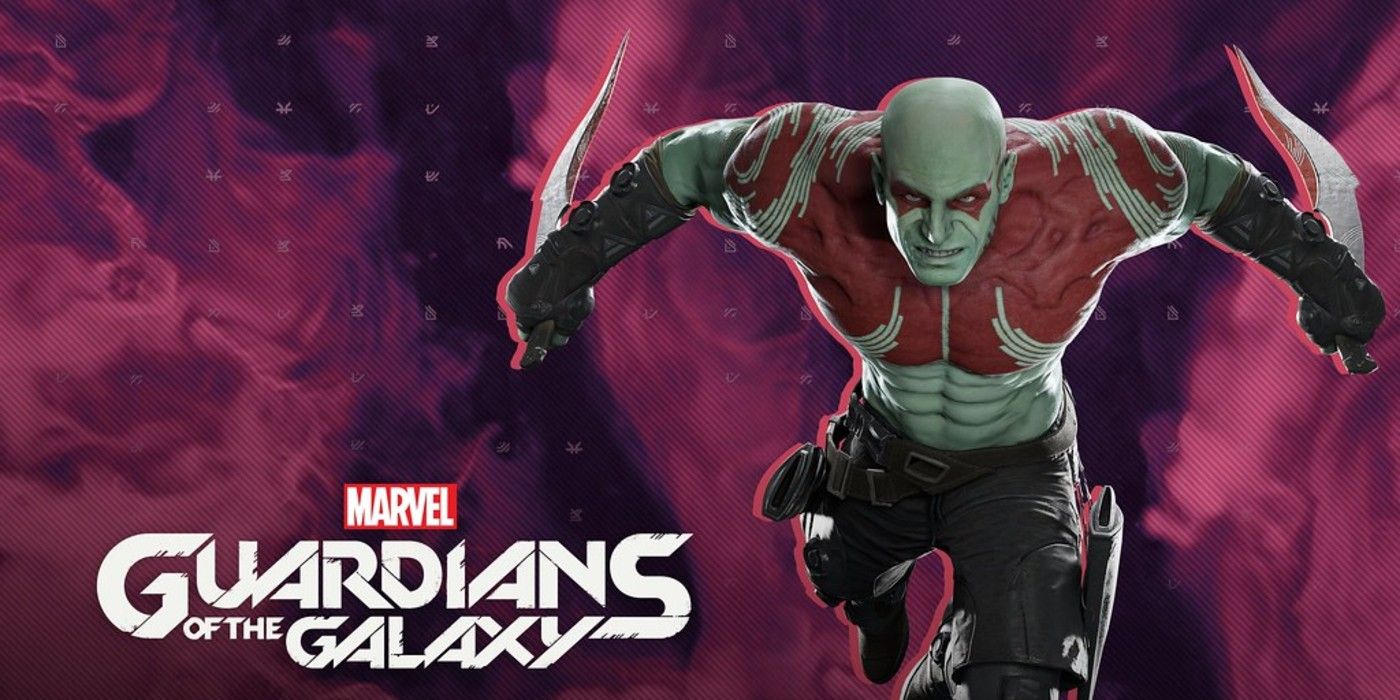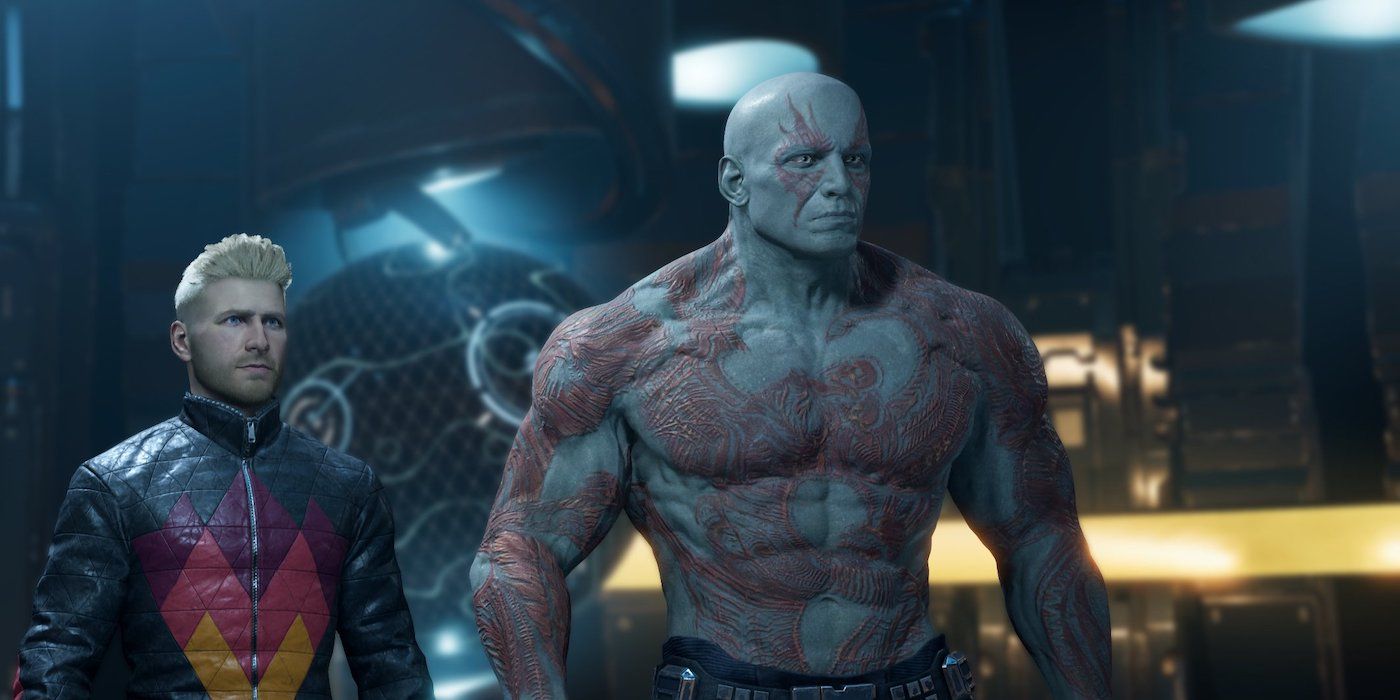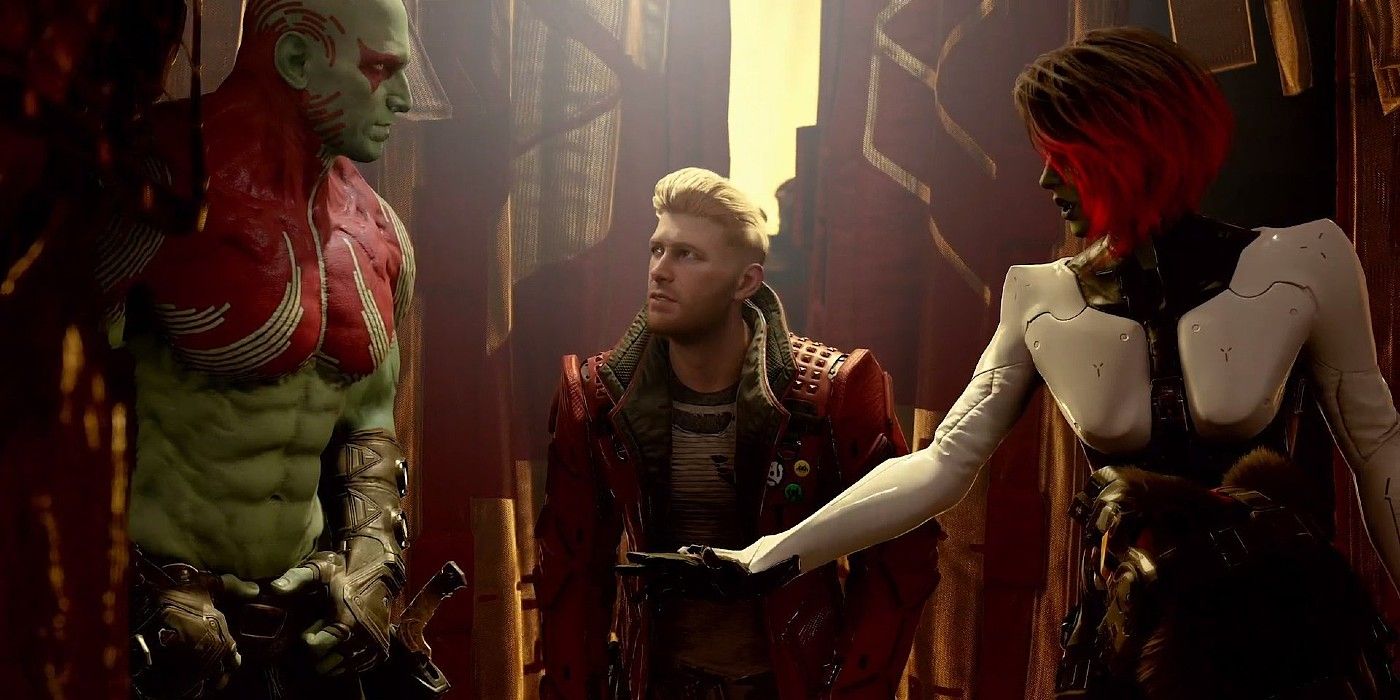
Marvel’s Guardians of the Galaxy features the same lineup as the one seen in the Marvel Cinematic Universe, but its interpretation of those characters differs in many ways, most notably with Drax the Destroyer. Played by Dave Bautista in James Gunn's Guardians of the Galaxy films, Drax in the MCU provides comic relief and insight with unrestrained honesty due to his inability to understand sarcasm or social cues. Thankfully, most characters in Marvel's Guardians of the Galaxy give some form of comic relief in an otherwise tense, galaxy-threatening situation.
Marvel’s Guardians of the Galaxy takes place after a Galactic War between the Chitauri, Thanos, and the rest of civilized space. Though the fighting has ceased, the war affected dozens of planets and civilizations, with trauma also influencing the dynamics and personalities present in the Guardians of the Galaxy team. Unfortunately, the galaxy let down its guard in the wake of the Chitauri's invasion, giving rise to the Universal Church of Truth and Grand Unifier Raker. As a mysterious force called The Promise spreads across the galaxy, Star-Lord, Gamora, Drax, Rocket, and Groot stumble their way into become the galaxy's latest heroes.
It was made clear in the game's announcement that Square Enix's GOTG would deviate from the MCU and take inspiration primarily from the Guardians' comics. The backstories, events, and appearances present in Marvel's Guardians of the Galaxy largely differ from those seen in the MCU. In many ways, the game's depiction of Drax the Destroyer exemplifies that approach, with the character very much departing from Dave Bautista's iconic portrayal seen in both Guardians of the Galaxy films and Avengers: Infinity War.

The overarching enemy of the MCU's Infinity Saga was Thanos, the Mad Titan. Though the character had several prominent connections to the Guardians of the Galaxy, his rivalry extended to places like Earth, Asgard, and beyond. Drax expressed interest in slaying Thanos after the first Guardians of the Galaxy movie, but his first rival was Ronan the Accuser. Unlike the comics, Thanos wasn’t directly responsible for the deaths of Drax’s wife and daughter. Instead, Ronan the Accuser (acting on Thanos’ orders) laid waste to planets and civilizations, killing countless living beings and anything else that stood in his way. He was after the Power Stone, one of the Infinity Stones in the MCU, and killed Drax's family during his search. Drax’s urge to kill Ronan placed him (and the Guardians) in increasingly dangerous situations, though he redeemed himself by assisting the team in defeating Ronan on Xandar.
Despite his importance in the GOTG films, Ronan the Accuser doesn’t feature as a villain in Marvel’s Guardians of the Galaxy, nor is he ever mentioned by Drax in any of his dialogue. In fact, Ronan doesn’t seem to have sided with the Chitauri or Thanos in the GOTG game at all, if he even exists. Instead, Drax focuses his attention and energy on defeating Thanos during the Galactic War. The details surrounding the War are hazy, but players can collect information in the game's levels and through dialogue with the team. In the Guardians of the Galaxy game, Drax has seemingly accomplished his quest for vengeance and killed Thanos before the game’s events, receiving praise and admiration across the galaxy for his actions.

Marvel’s Guardians of the Galaxy established Thanos quite early in its story, though the galaxy believes the Mad Titan to have perished at some point during the Galactic War. His alliance with the Chitauri presented a severe threat and resulted in the deaths of many civilizations and worlds. Drax’s wife and daughter were among the Galactic War’s casualties, which drove the warrior to the brink of madness with grief and a lust for vengeance. As a result, Drax sought out mysterious sorcerers to acquire the power he needed to defeat Thanos. The sorcerers gave him a potion that would grant him the strength to defeat the Mad Titan. However, Drax believes that Thanos survived their battle and continues his search across the galaxy. This quest ultimately landed Drax in several prisons and eventually led him to join the Guardians.
Unfortunately, Thanos wasn’t easily defeated during the events of the MCU's Infinity Saga. With the Infinity Gauntlet, Thanos was immune to his enemies' attacks. Even the combined efforts of the Avengers and the Guardians of the Galaxy weren't enough to bring him down. Though Drax played a minor role in defeating Thanos in Avengers: Endgame, the characters have a much more personal rivalry in the comics, and one that is duly reflected in Marvel's Guardians of the Galaxy.

In the MCU, Drax is often played up as a joke. While Dave Bautista does an excellent job bringing nuance and depth to a character frequently used for cheap giggles, the films have failed to reflect his power levels in the comics. Guardians of the Galaxy Vol. 2 saw Drax plunge into the belly of a space worm and remain there for the duration of the fight. While this battle and the battle against Thanos provided a good laugh in the MCU, it gave the idea that Drax was far from the deadly warrior he made himself out to be. Though his weapons and fighting style remain largely the same between Marvel continuities, the MCU underplayed Drax’s abilities in favor of protagonists Star-Lord and Gamora. Thankfully, the character got a chance to shine in Marvel’s Guardians of the Galaxy's gameplay.
Drax the Destroyer can learn powerful special moves using his blades and brute strength. As Star-Lord, players can give out orders to attack specific enemies, but Drax is more than capable of resolving battles independently. Though Drax is a powerful force alone, his combat skills are more effective when working in a team. In Marvel’s Guardians of the Galaxy, teammates can perform attack combos to empty the health bar of a boss in seconds. While the MCU's Guardians of the Galaxy sometimes had a rough time balancing between action-packed battle scenes and advancing the plot, Marvel’s Guardians of the Galaxy features a seamless transition between party banter, one-on-one dialogue, and hostile encounters. This ensured that every character’s personality and abilities could have a chance to shine, emphasizing their unique stories, strengths, and weaknesses throughout GOTG’s many hours of gameplay.
Eidos-Montréal brought its own unique depiction of the Guardians characters that differed from the MCU's. The studio took into account the Guardians comics history, as well as other interpretations such as the MCU in crafting its own version of the team. Though no two Draxes are identical across Marvel’s many continuities, the difference between the version seen in the MCU and Marvel's Guardians of the Galaxy is significant.
from ScreenRant - Feed https://ift.tt/2YhDxqk
via IFTTT
No comments:
Post a Comment